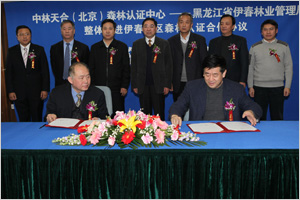The market thrives on competition, a concept that also applies to certification schemes. As a second example of forest certification to be presented in this issue, PEFC International illustrates the importance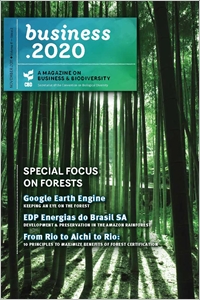 of certification and the benefits it can bring. As only a small proportion of the world's forests are certified, having a number of reliable players working towards the same goals of sustainability and viability can only be of benefit to companies and other stakeholders.
of certification and the benefits it can bring. As only a small proportion of the world's forests are certified, having a number of reliable players working towards the same goals of sustainability and viability can only be of benefit to companies and other stakeholders.
Much like a forest, new ideas sometimes take a long time to grow and mature. Over time, both forests and ideas become more complex and diverse. Likewise, as a healthy tree that has roots spread in all directions, so the concept of sustainable forest management needs has been drawing from many different sources to produce a specific result.
Today it is accepted that sustainable forestry relies on three integrated and equally important concepts: those of economic viability; ecological soundness; and social justice. To miss any one of these elements dooms any attempt to achieve sustainability in forest management, just as in development.
But this knowledge - given the life span of many trees or human cultures – is a relatively new concept. It wasn't that long ago that we did not understand how necessary it was to have a convergence of the three pillars of sustainability. Today many activities that aim to promote sustainability still focus primarily on one pillar, sometimes with adverse effects on the others.
The concept of sustainable development and the interrelationship of the three pillars was originally popularized in the 1987 Brundtland Report, yet it was at the Rio Earth Summit in 1992 where the idea finally took hold. The Rio Earth Summit also led to the initial efforts to define sustainable forest management in the precisely titled "Non-Legally Binding Authoritative Statement of Principles for a Global Consensus on the Management, Conservation and Sustainable Development of all Types of Forests." The message coming out of the Rio Earth Summit — that nothing less than a transformation of our attitudes and behaviour would bring about the necessary changes — was heard by millions around the world.
The message reflected the complexity of the problems facing us, and governments recognized the need to redirect international and national plans and policies to ensure that all economic decisions fully took into account environmental and social impacts.
The Summit resulted in five documents that have fundamentally influenced the way our global society views sustainable development:
- The overarching document, the Rio Declaration, defines the rights of people to development, and their responsibilities to safeguard the common environment
- The Agenda 21 document has become a blueprint for action by all types of organizations and initiatives globally, nationally, and locally
- The Convention on Biological Diversity (CBD), and the Framework Convention on Climate Change (UNFCCC) have both become legally binding documents
- The fifth document, the Forest Principles, is the least well known, yet with its preamble stating that "Forests are essential to economic development and the maintenance of all forms of life", its relevance to the overall concept of sustainable development appears self-evident. Governments, however, could not agree on a globally enforceable framework for sustainable forestry.
The challenges facing the world's forests, and the inability of governments to act, resulted in the birth of the idea of forest certification. This voluntary mechanism provided forest owners with a framework to implement the spirit of the Forest Principles, with guidance on how to manage forests sustainably, and with the opportunity to demonstrate and validate their responsibly practices through independent certification.
Over time, forest certification has become one of the most important tools for the global society to promote sustainable forest management. However, despite major strides in certification, only nine per cent of the world's forests have been certified and 90% of these are in Europe and North America. Similarly, despite some progress in alleviating poverty around the world, population growth means that, in real terms, the number of people living below the poverty line remains high. Poverty is a major cause of deforestation and illegal logging. This situation is further complicated in rapidly emerging economies where land tenure rights have been, to date, ill-defined, weak and still evolving.
Certification, such as PEFC– the Programme for the Endorsement of Forest Certification, is one of the mechanisms that offer the potential to contribute to improving livelihoods, particularly in developing countries, and to assist in lifting people out of poverty. Certification is a mechanism that will also assist us in moving towards the Aichi Biodiversity Targets, notably that by 2020 forests are to be managed sustainably and forest loss is to be halved. This, however, requires us to mainstream forest certification throughout the world and especially in the Global South. To achieve this, all forest certification systems and stakeholders must seek to ensure that our collective efforts to expand forest certification are additive and not duplicative, contributing to an expansion of the overall total certified forest area.
In a world where deforestation continues unabated in many nations, stakeholders must collaborate whenever possible. While PEFC is the larger of the two global forest certification systems, we must utilize the different approaches offered for the betterment of society as a whole. We must agree on a common framework to guide forest certification and its stakeholders in their actions. The Rio Forest Certification Declaration, launched in 2010 in Rio de Janeiro, is based on the idea that a common set of principles is needed, a set of principles that provides guidance to all of us about what is needed to better promote and expand forest certification.
It recognizes in its preamble that "The challenge of safeguarding the environmental, social and economic benefits that the world's forests provide is critical for life on Earth. It requires a world in which people manage forests sustainably, a world that recognizes the integral and interdependent nature of our planet, a world that acknowledges and values the significance of rural communities, indigenous peoples, and families that depend on forests for their livelihoods" and states ten principles as a common framework to maximize the benefits that forest certification can offer to society:
- Human beings are at the centre of sustainable forest management
- Recognize and respect national sovereignty in the design and implementation of sustainable forest management policies and standards
- Protect the complexity of forest ecosystems, forest-dependent economies, and rural culture by adopting integrated forest management plans and policies
- Contribute to poverty reduction through empowerment of the poor
- Open and accessible stakeholder processes are essential
- Transparency, inclusiveness, and collaboration are fundamental prerequisites for global sustainability
- Utilize the benefits of renewable and climate-smart forestbased products
- Rely on science, local experience, and traditional forest-related knowledge to advance sustainable forest management
- Use a precautionary approach to prevent irreversible damage
- Promoting global acceptance of sustainable forest management through voluntary programmes and education is the fastest path to healthy forests and vibrant rural communities.
The Rio Forest Certification Declaration picks up on ideas that have previously emerged in other documents, including the 1992 Rio Declaration, the Universal Declaration of Human Rights, Agenda 21, the UN Charter, and the Forest Principles, to establish a framework that all stakeholders should be able to support.
The Aichi Biodiversity Targets require us to manage forests sustainably, and to balance the environmental, social and economic pillars of sustainability. Without all three, forests will not be protected, family foresters cannot thrive, forest dependent communities cannot exist, illegal logging will not be abated, and carbon pollution will not be mitigated.
Forest certification has proven to be one of the most effective and successful mechanisms to promote sustainable forest management. This movement needs further support and guidance, and principles such as those outlined in the Rio Forest Certification Declaration may provide the necessary framework to allow forest certification to thrive and further develop.
As the Aichi Biodiversity Targets require the commitment of all of us, so does forest certification. With only nine per cent of the world's forests certified as sustainably managed after 17 years of forest certification, and over 90% of these forests located in the Global North, it behoves all of us to identify and remove the barriers for expanding sustainable forest management and its certification, especially in the Global South.
"Forest certification has proven to be one of the most effective and successful mechanisms to promote sustainable forest management. This movement needs further support and guidance, and principles such as those outlined in the Rio Forest Certification Declaration may provide the necessary framework to allow forest certification to thrive"
Forest certification, guided by globally applicable principles such as those laid out in the Rio Forest Certification Declaration, should be integrated in the work of all stakeholders in order to best contribute to the achievement of the Aichi Biodiversity Targets.
 Based in Finland, Finnish forestry company Finnforest is part of the Metsäliitto Group. Founded in 1934, Metsäliitto is a cooperative owned by no less than 130,000 private Finnish forest owners. With sales in the region of Euros 5 billion per year, a staff of about 14,000 and production units and offices in 30 countries, it is the tenth largest forest industry group in the world.
Based in Finland, Finnish forestry company Finnforest is part of the Metsäliitto Group. Founded in 1934, Metsäliitto is a cooperative owned by no less than 130,000 private Finnish forest owners. With sales in the region of Euros 5 billion per year, a staff of about 14,000 and production units and offices in 30 countries, it is the tenth largest forest industry group in the world.
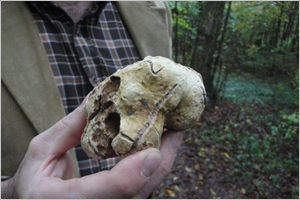
 of certification and the benefits it can bring. As only a small proportion of the world's forests are certified, having a number of reliable players working towards the same goals of sustainability and viability can only be of benefit to companies and other stakeholders.
of certification and the benefits it can bring. As only a small proportion of the world's forests are certified, having a number of reliable players working towards the same goals of sustainability and viability can only be of benefit to companies and other stakeholders.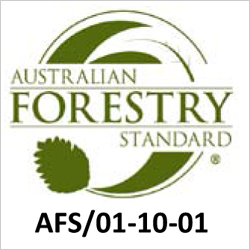
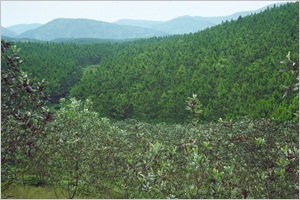
 The Irish Forest Certification Standard is seeking endorsement by PEFC for the first time, and interested parties from around the world are encouraged to participate in the
The Irish Forest Certification Standard is seeking endorsement by PEFC for the first time, and interested parties from around the world are encouraged to participate in the 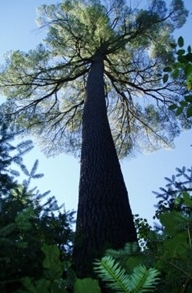 Both the Canadian Sustainable Forest Management Standard (
Both the Canadian Sustainable Forest Management Standard ( As part of the endorsement of forest certification systems, PEFC requires that schemes undergo a rigorous and independently verified re-endorsement process every 5 years. The Brazilian Forest Certification Programme (
As part of the endorsement of forest certification systems, PEFC requires that schemes undergo a rigorous and independently verified re-endorsement process every 5 years. The Brazilian Forest Certification Programme (